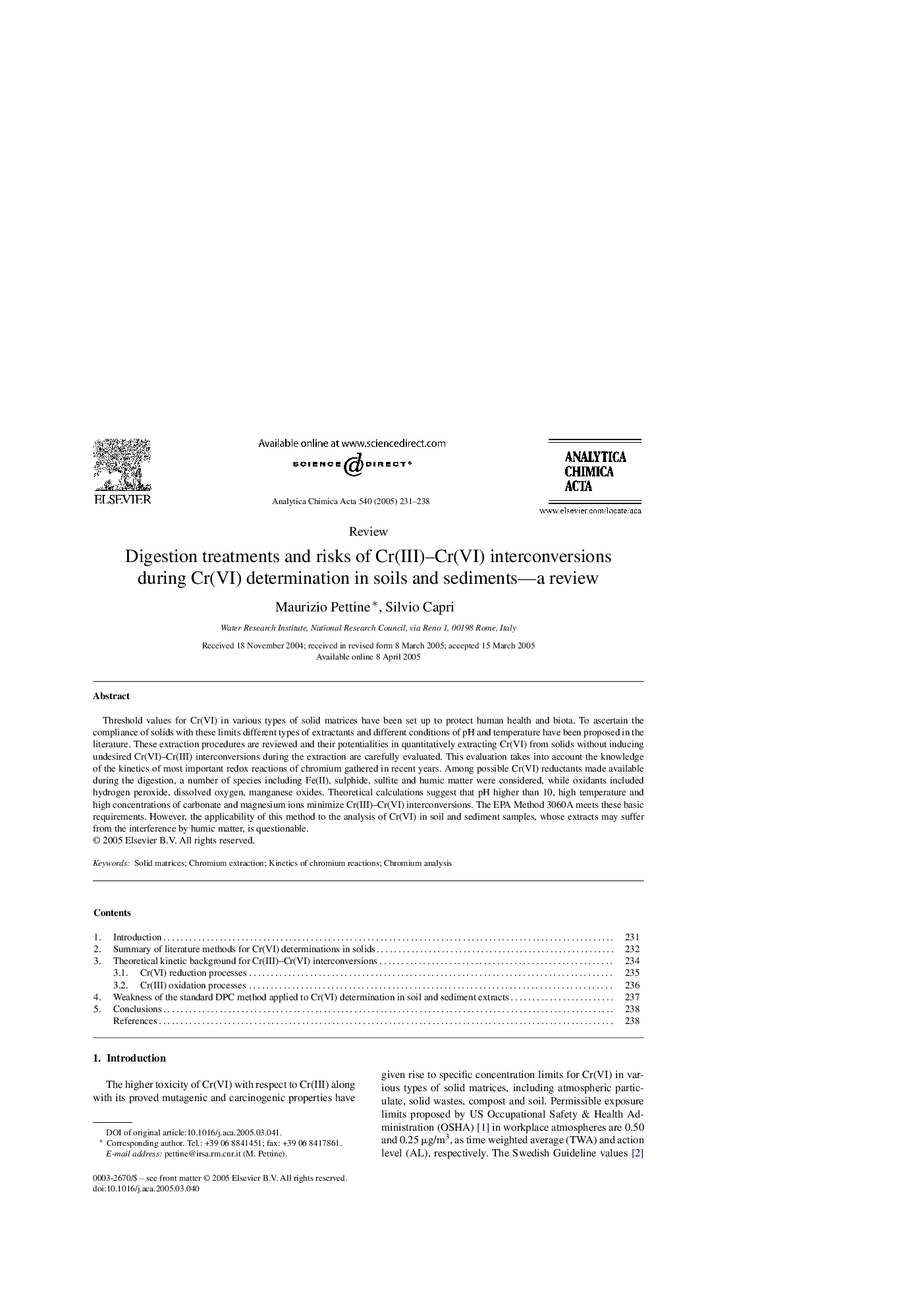| Article ID | Journal | Published Year | Pages | File Type |
|---|---|---|---|---|
| 9743632 | Analytica Chimica Acta | 2005 | 8 Pages |
Abstract
Threshold values for Cr(VI) in various types of solid matrices have been set up to protect human health and biota. To ascertain the compliance of solids with these limits different types of extractants and different conditions of pH and temperature have been proposed in the literature. These extraction procedures are reviewed and their potentialities in quantitatively extracting Cr(VI) from solids without inducing undesired Cr(VI)-Cr(III) interconversions during the extraction are carefully evaluated. This evaluation takes into account the knowledge of the kinetics of most important redox reactions of chromium gathered in recent years. Among possible Cr(VI) reductants made available during the digestion, a number of species including Fe(II), sulphide, sulfite and humic matter were considered, while oxidants included hydrogen peroxide, dissolved oxygen, manganese oxides. Theoretical calculations suggest that pH higher than 10, high temperature and high concentrations of carbonate and magnesium ions minimize Cr(III)-Cr(VI) interconversions. The EPA Method 3060A meets these basic requirements. However, the applicability of this method to the analysis of Cr(VI) in soil and sediment samples, whose extracts may suffer from the interference by humic matter, is questionable.
Keywords
Related Topics
Physical Sciences and Engineering
Chemistry
Analytical Chemistry
Authors
Maurizio Pettine, Silvio Capri,
